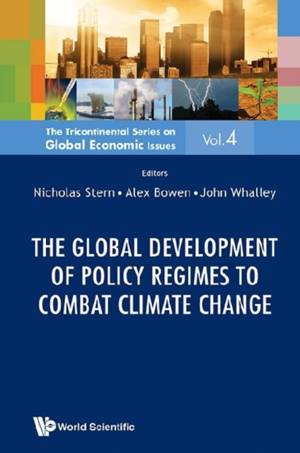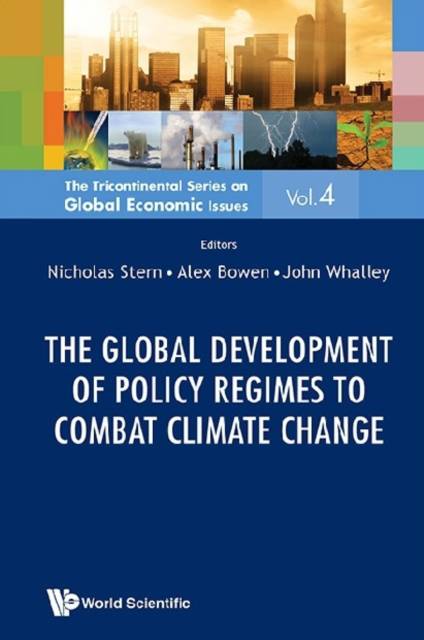
- Afhalen na 1 uur in een winkel met voorraad
- Gratis thuislevering in België vanaf € 30
- Ruim aanbod met 7 miljoen producten
- Afhalen na 1 uur in een winkel met voorraad
- Gratis thuislevering in België vanaf € 30
- Ruim aanbod met 7 miljoen producten
Zoeken
Global Development of Policy Regimes Combat Climate Change
Alex Bowen & John Whalle Nicholas Stern
€ 160,45
+ 320 punten
Omschrijving
The year 2015 will be a landmark year for international climate change negotiations. Governments have agreed to adopt a universal legal agreement on climate change at the 21st Conference of Parties (COP21) to the United Nations Framework Convention on Climate Change (UNFCCC) in Paris in 2015. The agreement will come into force no later than 2020.This book focuses on the prospects for global agreement, how to encourage compliance with any such agreement and perspectives of key players in the negotiations -- the United States, India, China, and the EU. It finds that there is strong commitment to the established UN institutions and processes within which the search for further agreed actions will occur. There are already a myriad of local and regional policies that are helping to reduce greenhouse gas emissions and build mutual confidence. However, the chapters in the book also highlight potential areas of discord. For instance, varying interpretations of the "common but differentiated responsibilities" of developing countries, agreed as part of the UNFCCC, could be a major sticking point for negotiators. When combined with other issues, such as the choice of consumption or production as the basis for mitigation commitments, the appropriate time frame and base date for their measurement and whether level or intensity commitments are to be negotiated, the challenges that need to be overcome are considerable. The authors bring to bear insights from economics, public finance and game theory.
Specificaties
Betrokkenen
- Auteur(s):
- Uitgeverij:
Inhoud
- Aantal bladzijden:
- 280
- Taal:
- Engels
- Reeks:
- Reeksnummer:
- nr. 4
Eigenschappen
- Productcode (EAN):
- 9789814551847
- Verschijningsdatum:
- 3/04/2014
- Uitvoering:
- Hardcover
- Formaat:
- Genaaid
- Afmetingen:
- 147 mm x 229 mm
- Gewicht:
- 635 g

Alleen bij Standaard Boekhandel
+ 320 punten op je klantenkaart van Standaard Boekhandel
Beoordelingen
We publiceren alleen reviews die voldoen aan de voorwaarden voor reviews. Bekijk onze voorwaarden voor reviews.











